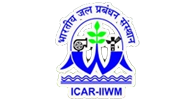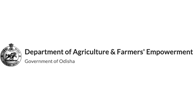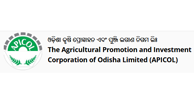ICAR-Central Rice Research Institute, Cuttack has played a significant role in supporting the Odisha Integrated Irrigation Project for Climate Resilient Agriculture (OIIPCRA) under the project entitled "Enhancing Resilience of Smallholders to Climate Change through Sustainable Intensification and Digital-driven Knowledge Dissemination (E-CHASI)" program. The E-CHASI project is being implemented in villages of Ranajhali, Paliama, and Kosalapalli in the Purushottampur Block of Ganjam district, as well as in Rajualibindha and Sahada villages in the Bhadrak district of Odisha.
Contribution to OIIPCRA :
Enhanced yield and water productivity of smallholders in Ganjam and Bhadrak district of Odisha :
The introduction of dry direct seeded rice (Dry-DSR) in project areas of Odisha, specifically in Ganjam and Bhadrak districts, has demonstrated a positive impact on water productivity without causing a significant decline in rice crop yields since the E-CHASI implemented. The implementation of Dry-DSR covered an area of 15.71 hectares in Ganjam and 14.47 hectares in Bhadrak and paddy seeds were distributed among 36 and 46 beneficiaries respectively during kharif season 2023. Land preparation involved the use of a rotavator to achieve well-pulverized soil, followed by sowing through a tractor-drawn seed drill, and weed control through herbicide application. The total area under Dry-DSR increased by 1.6 times, from 19 hectares in 2022 to 30 hectares in 2023. On average, Dry-DSR demonstrated a 27-31% higher yield compared to conventionally broadcasted rice. Additionally, it led to a reduction in irrigation water use by 25-30% and lowered labour requirements by up to 33-39% compared to the traditional practice of transplanted rice. Dry-DSR offers a sustainable and water-efficient alternative to traditional rice cultivation methods while maintaining grain yield levels comparable to the conventional approach.
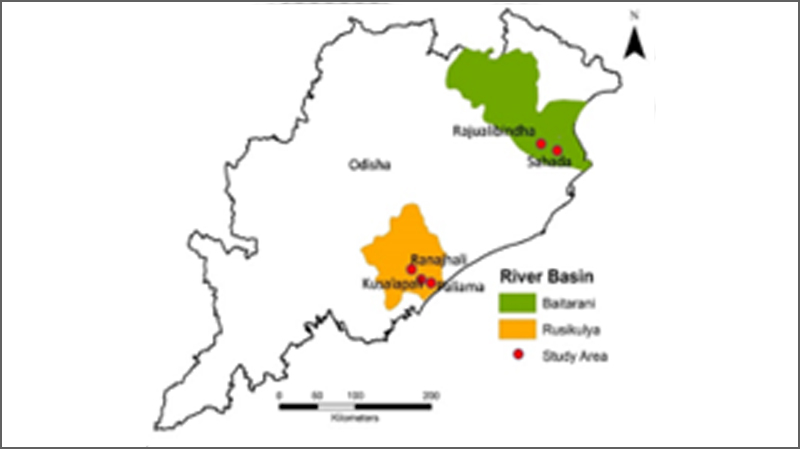
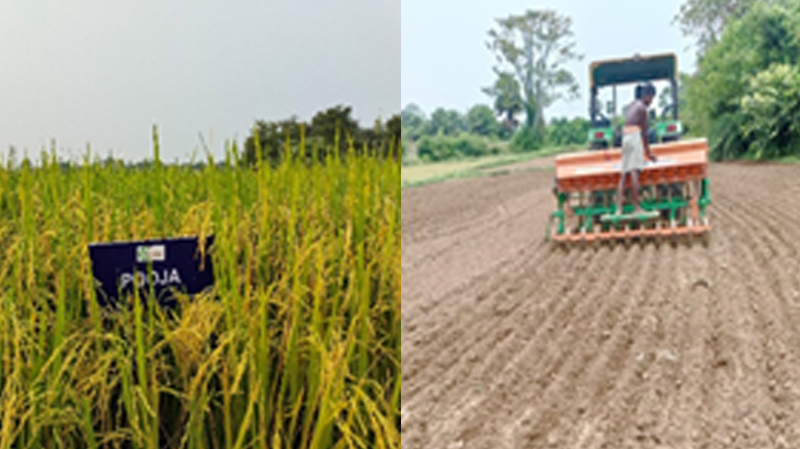
Impact of varietal diversification with climate resilient and stress tolerant high yielding paddy varieties (HYVs) and advantage over local varieties :
Truthfully labelled seeds of stress-tolerant and climate-resilient varieties, were provided to farmers from NRRI, Cuttack. These seeds were then demonstrated among 151 beneficiaries (34.07 ha) in Ganjam and 96 beneficiaries (87.85 ha) in Bhadrak respectively using optimal Climate-Smart Agriculture (CSA) practices whereas, HYV paddy seeds were demonstrated in 45.87 ha (118 beneficiaries) in Ganjam and 76.16 ha (217 beneficiaries) in Bhadrak respectively. The results indicated a notable yield advantage for the Climate-Resilient varieties and HYVs ranging from 58.7% to 67.74% when compared to the local varieties.
Integrated nutrient management practices implemented and use efficiency enhanced :
Field-level demonstrations were implemented to showcase enhanced nutrient management practices, encompassing methods such as CLCC-based N application, RCM-Odisha-based N application, Dhaincha-based INM, and NRRI-Endo NPK consortia in rice. These demonstrations covered an area of 19.48 hectares (76 farmers) in Sahada and Rajualibindha villages in the Bhadrak district, as well as 20.18 hectares (76 farmers) in Ranajhali, Paliama, and Koshalapalli villages in the Ganjam district. A total of 152 beneficiaries across the two districts participated. The adoption of these improved nutrient management practices resulted in a 12-22% increase in the partial factor productivity of nitrogen compared to conventional farming practices. Soil health assessment was done and beneficiaries were supplied with soil health cards containing information on pH, EC, organic C, available N, P and K and corresponding fertilizer recommendation for different crops including rice, legumes, oilseeds and vegetables in the vernacular language. A total of 258 and 129 SHCs were distributed among the beneficiaries in Ganjam and Bhadrak districts respectively.
Integrated Pest Management (IPM) in Rice implemented :
A comprehensive and tailored Integrated Pest Management (IPM) validation trial was initiated in the project villages. A total of 46.5 hectares of area under rice cultivation was taken for demonstration of IPM practices during Kharif-2023 in Ganjam and Bhadrak districts. IPM strategies were based on regular pest monitoring by survey and distribution of 200 numbers of solar light traps developed by ICAR- NRRI, Cuttack for mass trapping of phototrophic insect pests and need based (ETL based) application of chemical insecticides like Ferterra, Coragen and Multiplex-Multineem. Fungicides Propiconazole 25EC (Tobler) for Rice Blast disease in Ganjam, Bounos for controlling leaf spot and powdery mildew disease, Contaf against sheath blight of rice and streptocyclin against bacterial diseases along with pre and post emergence herbicides were distributed among 148 beneficiaries in Ganjam and 202 beneficiaries in Bhadrak. IPM validation demonstrated success across all tested rice varieties, showcasing low incidences of insect pests and diseases, notably with stem borer at 1.80%, leaf folder at 3.50%, brown plant hopper at 4-5 per hill, leaf blast at 5.75%, sheath blight at 5.50%, false smut at 2.75%, and bacterial leaf blight at 4.25%. The overall grain yield, biomass, and benefit-cost ratio (B:C) were notably higher. Soil, grain, and water samples from both IPM and farmers' practice (FP) trials are currently undergoing analysis to determine their pesticide residue levels, specifically with regard to Maximum Residue Limits (MRL).
Application of liquid Bio-fertilizer of rhizospheric and endophytic nitrogen fixing bacteria in rice at Ranajhali, Ganjam :
On-field demonstration regarding application of rhizospheric endophytic nitrogen (N2) fixing bio-fertilizer was undertaken in Ganjam district over an area of 5.4 acres (5 beneficiaries) in Ganjam district and 10 acres (12 beneficiaries) in Bhadrak district respectively. This bio-fertilizer harnesses the natural symbiotic relationship between plant roots and beneficial microorganisms, enhancing N2 fixation and promoting plant growth. The application led to improved soil health, increased microbial activity, and better nutrient availability, resulting in higher crop yields. Farmers reported satisfaction with the outcomes, noting reduced dependency on chemical fertilizers and improved profitability. This successful demonstration marks a promising step towards more eco-friendly and productive agricultural systems in the region.
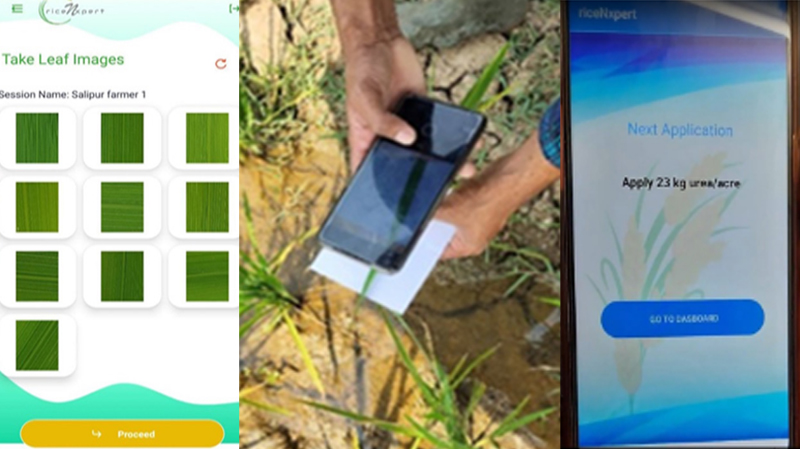
Agro-ecological crop diversification :
Diversification of rice with pulse crops like green gram (Virat) and black gram (LBG 787) were introduced after paddy harvesting that have YMV resistance and high yields. A total of 67.65 hectares in 256 farmers’ fields were used for plantation of pulse crops. Groundnut (Kadiri Lepakshi) was the primary oilseed crop grown in Ganjam (1.41 hectares; 14 farmers’ fields). Rice-vegetable system comprising of chilli (Krishna), tomato (Namdhari), cauliflower (Agahni), bitter gourd (PDM), French bean (Pencil bean) and okra (Radhika) were demonstrated in 7.16 hectares in 68 farmer fields. Cropping intensity increased from a baseline value of 118 to 179 in the project villages of Ganjam district. Similarly, crop diversification activities were performed in Rajualibindha and Sahada villages of Bhadrak district. Diversification of rice with pulse crops like green gram (Virat) and black gram (LBG 787) were demonstrated in 51.22 hectares in 138 farmers’ fields. Mustard (Sushree) and Sesame (Smarak) were the oilseed crops grown in Bhadrak district (26.84 hectares; 96 farmers’ fields). Rice-vegetable system comprising of chilli (Krishna), brinjal (JK), cabbage (T-621), pumpkin (Arjun), cowpea (VNR), Amaranthus (Iris), spinach (Verdenta), coriander (Suravi), tomato (Namdhari), cauliflower (Agahni), bitter gourd (PDM), French bean (Pencil bean) and okra (Radhika) were demonstrated in 15.91 hectares in 445 farmers’ fields. Cropping intensity increased from a baseline value of 112 to 187 in the project villages of Bhadrak district.
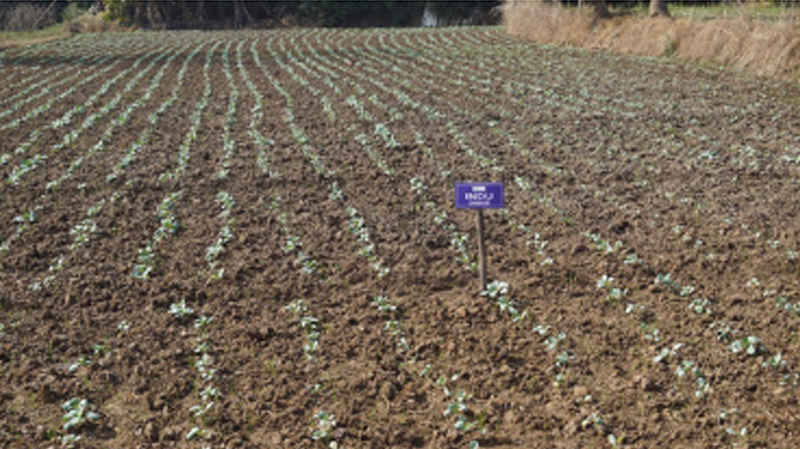
Establishment of Village Knowledge Centre (VKC) :
Two Village knowledge centres one in Ganjam and one in Bhadrak has been established. The digital tools like Desktop, laptop, tablet, pendrive, UPS, projector with screen, voice amplifier, microscope, web camera & printer have been provided to each VKC. Training have bene provided to rural youths and village knowledge centre management committee for smooth operation of the VKC in presence of state govt officials.
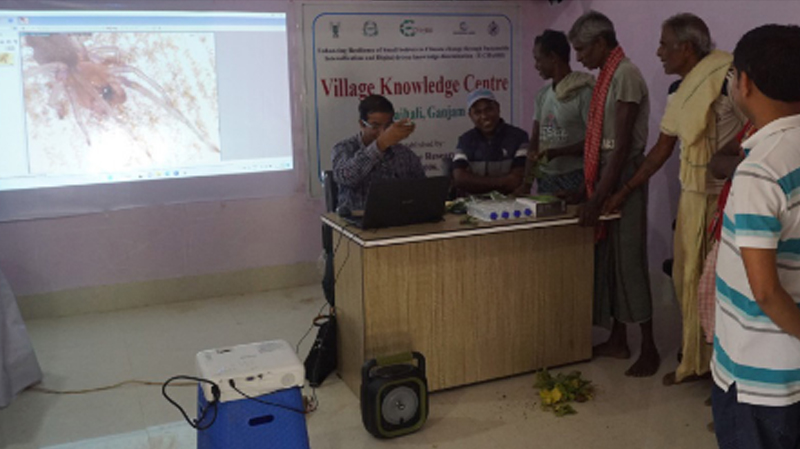
Integrated Farming System :
Two numbers of Rice-fish Integrated Farming System have already been established in Ganjam and Bhadrak districts respectively. Agro-forestry trees and other fruit crops have been planted in the IFS system.
Paddy distribution :
A total of 45.5 quintals of paddy seeds for an area of 118.36 ha have been distributed among 249 beneficiaries in Ganjam district, out of which, 16.47, 21 and 8.01 quintals of paddy seed have been distributed in 44.08, 52.96 and 21.32 hectares of area in Ranajhalli, Paliama and Kosalapalli villages respectively. Similarly, total 36.05 quintals of paddy seeds have been distributed among 295 beneficiaries covering 109.71 ha area in Bhadrak district. 21 and 15.05 quintals of paddy have been distributed in 67.16 and 42.55 hectares of area in Rajualibindha and Sahada villages respectively in Bhadrak district.
Capacity development through training & awareness programme :
Several training programs were implemented in Ganjam and Bhadrak clusters, focusing on various aspects of climate-smart agriculture (CSA), such as CSA practices, water management, nutrient management, and integrated pest management (IPM).









